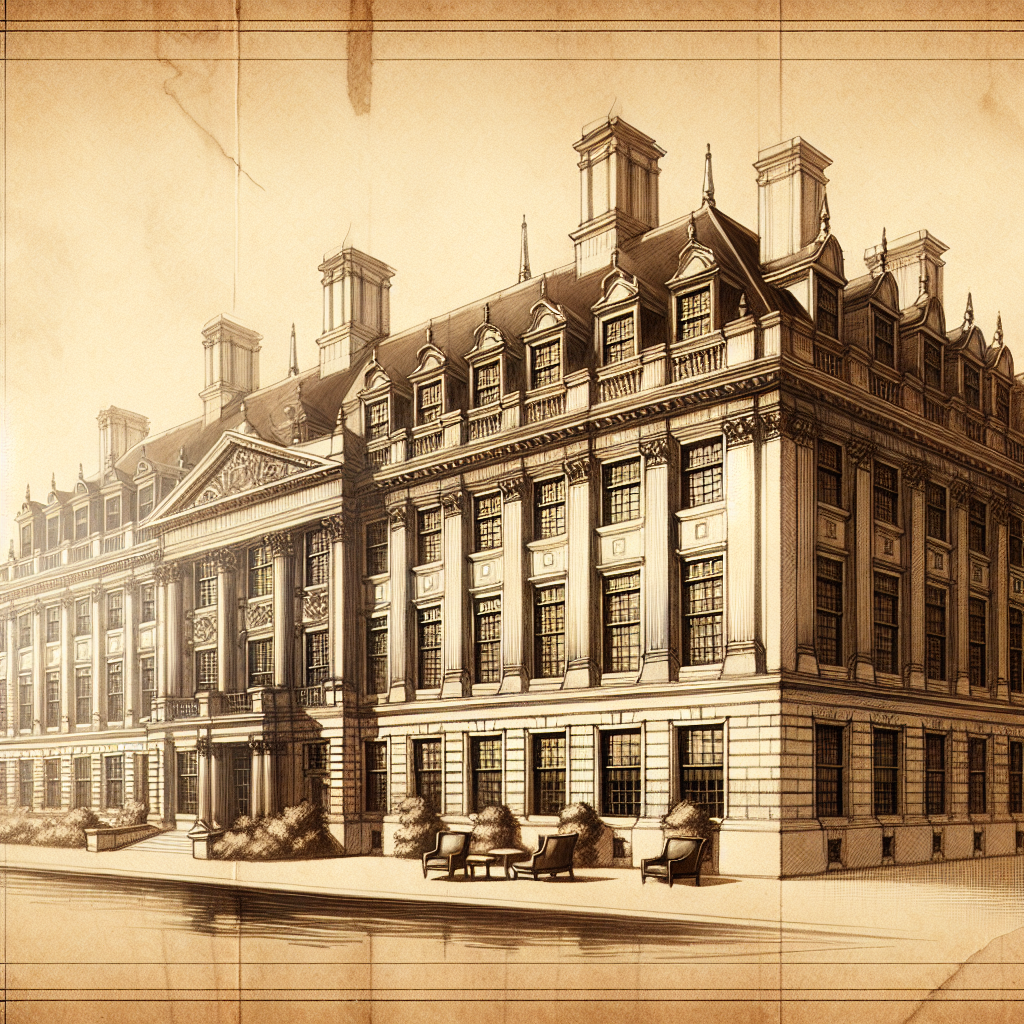If you think Harry Potter's Hogwarts is magical, wait till you explore the mystique of Debenham House. This London treasure, officially known as Peacock House, was built between 1905 and 1907 by architect Halsey Ricardo. Situated in the upscale neighborhood of Kensington, Debenham House doesn't just sit quietly amid the city's bustle; it stands as a testament to the arts and crafts movement that swept across the UK in the early 20th century.
Debenham House was commissioned by Ernest Debenham, a retail magnate who wanted a residence that reflected his unique taste and perhaps, a hint of whimsical rebellion against mundane architecture. It’s a perfect blend of style, ambition, and the visionary ideas that Ricardo, its architect, was known for. The house is a reflection of an era that appreciated intricate design, rich history, and revered craftsmanship.
The first thing that strikes you about Debenham House is its exterior. Splashed with vibrant, multicolored tiles crafted by Doulton & Co, the facade is a kaleidoscope of colors that draw you in, much like a cherished painting in a familiar art gallery. This eye-catching display isn't just an aesthetic choice. It's a nod to Ricardo's fascination with combining traditional techniques with modern materials. And in this way, Debenham House serves as an architectural bridge between the past and the then-present, providing a link with its rich history while pushing the boundaries of what's possible in design.
Inside, Debenham House continues to captivate. One might feel as if they’ve stepped into a fantasy world, with its explosion of color and intricate mosaic work on floors and walls, depicting birds and mythical creatures. This devotion to detail is not merely decorative. It's embedded with symbolism and reflects Debenham's personal socio-political statements, leaving much room for interpretation.
The liberal ideals of the arts and crafts movement are vivid here. They rebelled against the industrialization of the period, igniting a return to handcrafted beauty. You could argue that the house is nearly a work of art meant to be lived in. Inside its walls, you find reminders of a time when craftsmanship reigned supreme over mass production. That earnest appreciation for the human touch and creativity tug at the heartstrings, especially for those who find solace in authenticity over material clutter.
However, some might see Debenham House differently. Critics could argue that it's an opulent display by today's standards, a symbol of privilege that might seem disconnected from the struggles of the working class who wouldn’t dream of such luxury. Yet, others may view it as a preserved gem from a bygone era that enrolled itself as an actor in history. Beauty is subjective; what speaks to the heart of some might remain silent to others. These conflicting perspectives are vital because they embrace diverse opinions that are essential in any artistic dialogue.
It's fascinating to note how Debenham House has evolved and adapted through the years. It has hosted numerous important guests and even been used as a location for films and music videos, connecting it to pop culture in ways its creator might never have imagined. As the world evolves, so too does how we interpret such architectural marvels. Where once it was a private dwelling, today it's part educational resource, part historical artifact, and still part enigma.
In our understanding of places like Debenham House, it’s intriguing to consider how younger generations, especially Gen Z, perceive them. Raised in the digital age, where so much emphasis is on convenience and speed, there is a growing movement that values slowing down, appreciating things that require time, effort, and care to create. Debenham House can strike a chord for them as an embodiment of these ideals, a reminder of the beauty in detail.
For those who pass it by in Kensington, it might just be another old building. But there's much more underneath the surface. To explore Debenham House is to discover a tangible piece of cultural history, and it challenges us to recognize and appreciate not just what things look like, but what they stand for. While its very existence raises questions about privilege and preservation, it simultaneously bridges connections between the past and modern interpretations of style and heritage. In a world where historical landmarks can sometimes be overshadowed by new development and rapid technological advancement, Debenham House beckons us to pause and engage with our legacy, in all its complexity and splendor.

